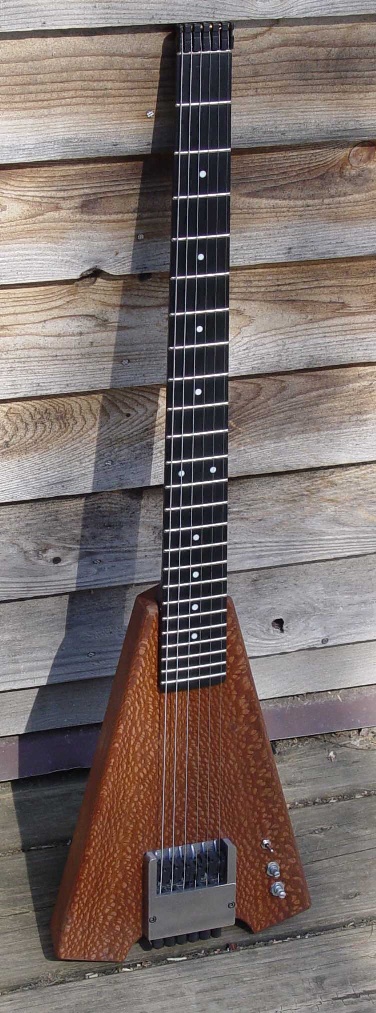Guitars
I started playing guitar when I was a teenager, first strumming chords, then taking finger-picking
acoustic lessons, and finally transitioning from finger picking blues to electric guitar. I played
throughout my 20s with some intensity, and then backed off to be more of an occasional player.
When my 30th college reunion approached, we decided to get our old college band back together, to
play a reunion dance. That got me to thinking about buying a practice guitar, and during the
resulting web searches I discovered Steinberger (headless) guitars. They are very small, but
full-scale, and easy to take with you wherever you go. I bought a bottom-of-the-line Spirit, and
then eventually a flagship graphite GL. For more info, see
Steinberger World.
Ned Steinberger, who invented the whole headless concept, came up with a special vibrato/tremolo
that allows you to keep the guitar in tune while altering the pitch of the notes. Most tremolos
do not provide this feature, and the resulting product, the Transposing Tremolo (Trans Trem, or
T-Trem) became popular. Because of the mechanical complexity, the T-Trem by itself sold for $700,
making T-Trem equipped guitars quite expensive. The GL came with a T-Trem, which I began to play with.
As wonderful at the GL is, I began to want to build my own. I assembled some Steinberger parts, but
the results were not compelling. I eventually designed and built my own Steinberger clone, using a
graphite neck and making a body out of lacewood. The idea was to have the wood grain be featured,
so I tried to minimize the visible pickups by using a Roland GK-2A hexaphonic pickup right near the
bridge (which was a T-Trem). The result was both interesting visually, and (to my surprise!) a
wonderful guitar to play.

I was interested in the Roland hexaphonic technology not only because it allowed me to build a
guitar that had "no pickups", but because it allowed me to experiment with Roland's "virtual guitar"
technology. These products (VG-8, VG-88, and now VG-99) take six separate signals from the guitar
(one from each string) and process them with a digital sound processor (DSP) to simulate just about
everything about the guitar. You can simulate resonances, and end up with acoustic sounds. You
can simulate pickup positions and pickup types. Every sound effect you can imagine, from revert to
sustain to distortion to phasing to wah-wah to chorusing. And, finally, you can simulate a variety of
amplifiers and speaker cabinets. To top it off, you can simulate a variety of specialty instruments,
including sitar and 12-string guitar. Even more surprising, the guitar can be re-tuned on the fly,
allowing you to switch to an open tuning for a moment, and then back to normal tunings, all at the
click of a switch. This allows a single guitar to provide the sounds that would normally require
many different guitars.
I enjoyed my VG-88 for many years, but eventually wanted to build another guitsr, this time with
piezo electric pickups. With this system, the string sounds are acquired with small piezo electric
sensors (actually microphones) that are embedded in each of the six string saddles. I chose a
GraphTech Ghost system and built my second guitar. This time I made a fixed bridge in my machine shop.

Bondy Fixed Bridge
Bondy 12-String Bridge
Bondy 5-String Narrow Bass Bridge
Bondy 6-String Steinberger-compatible Piezo Saddles
LBG Carbon Graphite Composite Guitars
Direct all inquiries to Jon Bondy, jon@jonbondy.com.
